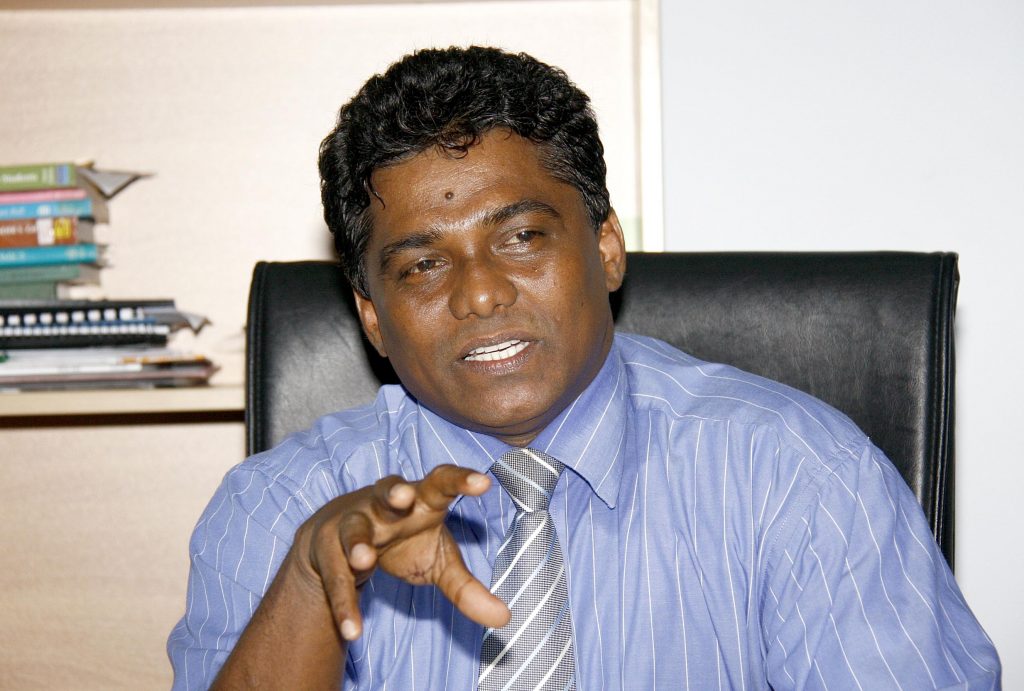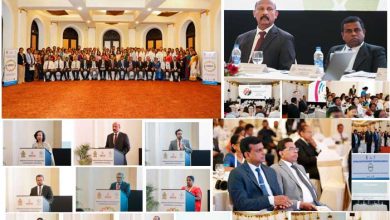A Way Forward for Resilient and Sustainable Sri Lanka Tourism


Department of Economics
University of Colombo
A Reality Emergent:
During pre-COVID pandemic situation, global tourism has revealed its great contribution as one of the most strategic contributors for economic growth and development in many economies around the world, It has made an impressive contribution in boosting the foreign exchange earnings, enhancing the levels of employments & income generating opportunities, increasing the foreign direct investment, strengthening the government revenue and developing the infrastructure facilities in many countries of the world.

Consequently, Global tourism could generate nearly 1.5 billion tourist arrivals and 1.7 US$ trillion income generation (6.8% of total exports, 27.4% of global services exports) in 2018. The industry could account for 1 in 4 of all new jobs created across the world, representing 10.6% of all global jobs (334 million), and 10.4% of global GDP in 2019 (https://wttc.org/Research/Economic-Impact).
However, the industry has become one of the hard-hit industries in the world under the new waves of COVID 19 at present. International tourist arrivals (overnight visitors) and overall tourism income dropped by nearly 88%-90% in January-March 2021 while Asia and the Pacific region has continued to suffer with the largest declines of both tourist arrivals and income by more than a 94% drop.
The Double Whammy Sri Lanka Tourism
Less than one year before the impact of COVID pandemic, Sri Lanka Tourism was severely jolted and hit by the Easter Sunday attack. It made nearly 18% decline of tourist arrivals and tourism income by the end of 2019. Though Sri Lanka has been recognized as the Top Best Destination Country to visit in the world in 2019 by Lonely Planet Travel Magazine, total international tourist arrivals were 1.9 million despite nearly 17% decline compared to 2018 (2.3 million of tourist arrivals) and also nearly 18% decline of tourism income/receipts (US$ 3.6 billion) compared to 2018 (US$4.4 billion).
COVID Affected Sri Lanka Tourism:
It is obvious factor that since the mid-March 2020, Sri Lanka Tourism was severely hit and unprecedently weakened by the COVID pandemic due to the consequent global isolation measures and closer of the borders of the country to prevent the spreading of COVID 19 in Sri Lanka and the subsequent negative impact on tourism industry and also the disastrous consequences on the whole economy of the country.
As a recovery and response effort, Sri Lanka opened its borders to tourists from January 2021 as one of the few countries in Asia despite the prevalent of pandemic related disruptions is alarming for an aggressive and aggravated disaster further. More specifically, several groups of tourists have visited and been expected to visit from Ukraine and Russia through the ‘bio-bubbles’ and a “Travel- Corridors” in December 2020 and now onwards. Furthermore, several industry recovery and resilient measures have been taken by the Government and the Central Bank to support the stakeholders in the tourism sector including measures to extend relief granted following the Easter Sunday attacks in 2019.

Government of Sri Lanka has carried outstanding measures so far to recover its tourism industry compared to the other countries in South Asian region.

The debt moratoria granted by Licensed Banks, Licensed Finance Companies and Specialised Leasing Companies at the request of the Central Bank extended at present in view of the adverse effects on the sector from the pandemic, payments on tour guides, tourism SME sector.
Impact of COVID Pandemic on Development Contribution of Sri Lanka Tourism:

Tourism is a multifaceted and interconnected industry with the other sectors and industries of Sri Lankan economy. The industry has a strong BACKWARD and FORWARD LINKAGES, which is relatively higher than that in many other industries of our economy.
Source: Annual Report 2020, Central Bank of Sri Lanka
The COVID pandemic has significantly hindered the possible contribution of tourism industry on socio-economic development of Sri Lanka Tourism. It has been clearly revealed from the recent publication of the World Travel and Tourism Council (WTTC) as well (file:///C:/Users/Dep%20of%20Economics/Downloads/SriLanka2021_.pdf).

- A loss of nearly 450,000 jobs.
- Between 2-3 million affected family members.
- A loss of nearly 4 US$ Billion foreign exchange earnings.
- A significant loss in government revenue making a great pressure to the fiscal and monetary policies
- A decline in the foreign direct investments in Sri Lanka making a negative impact on the external balance of the economy.
- A drop in the People-Centric and SME Sector-Driven development enlarging the prevalent social disparity.
- An interruption to the growth of the inter-connected and inter-regional development in Sri Lankan economy limiting the direct, indirect and induced positive impact of tourism to the whole economy.
- An untapped strategic

Capitalizing the Emerging Trends and Patterns in Post-COVID Global Tourism
Doing the Right Things: It is worthwhile to explore and to capitalize the emerging opportunities coming out from the pandemic to develop Sri Lanka Tourism.
Sri Lanka Tourism: Never Waste a Good Crisis
Emerging new trends and patterns in global tourism under the new normal of post-COVID scenario can be dominant until the successful vaccination is completed all over the world.
- MICE Tourism and mega tourism events market will go into a slow growth or defunct situation for a while.
- Group travel will shrink.
- Cruise travels will be less attractive for affluent and high-end tourists.
- Religious tourism will drop due to mass gathering’s health risk.
- Mature/Senior travellers and retirees will drastically decline going abroad, more specifically far destinations.
- Tourism may be inward-looking and more domestic focused.
- Air travel will become more expensive.
- Luxury hotels may come cheaper.
- Food & beverage consumption of hotels and restaurants will be changed towards more health concerns.
- Demand for personalized service, hospitality and caring will be rocketing up.
- Productivity and service attitudes of tourism employees will be severely challenged.
- Increasing demand for high degree of networking and collaboration
- Application of sustainable tourism practices will become highly instrumental and essentially strategic.
- Tourists become more likely to travel independently or in small groups.
- Nature-based travel options could be more interested.
- Higher attention on safety and hygiene protocols in selecting Hotel/Restaurant.
- A main purpose of travel will be ‘Health and Wellness’, but leisure and pleasure will be remaining as the core of travelling.
- Traveling locally more, looking inwards within the opportunities to the domestic market
- Maintain necessary social distancing.
- More interested on Micro-holidays and Road trips
- Higher demand for more heterogenous and individualistic tourism services
Key Economic Policy Measures for Resilient and Sustainable Sri Lanka Tourism
At present, National Policy Framework of Sri Lanka: Vistas of Prosperity and Splendour has kept a great expectation on tourism industry and its contribution for Sri Lankan economy along with the intention of increasing annual tourist arrivals to 7 million while adding foreign exchange inflow of USD 10 billion to its economy. The People Centred Economy and Sri Lanka Tourism can be summarized into Six-Hexagon Wheel.

Key economic policy measures and outcomes-driven strategies are decisive and instrumental for making Sri Lanka Tourism a more resilient and sustainable industry. Whatever economic policy measures and strategies are implemented they must ensure the sustainability of the industry.


- Going with Global Goals: Achieving the sustainability of the industry can ensure a great future of Sri Lanka Tourism. It will bring a globally accepted new vision to Sri Lanka Tourism with the balanced, prosperous, inclusive and innovative development. It must provide creative decision making, innovative management, effective marketing, inspirational relationship among employers and employees, hosts and guests, and also among the key stakeholders of the industry while ensuring the responsible leaderships in local, regional and national levels.
- Doing the Right Things Rightly: Correct policy measures with prioritizing the necessary areas in tourism development must be focused with systematic consideration. In this context, following aspects are fundamental:
(1) Comparative and Competitive Advantages,
(2) Industry Backward and Forward Linkages,
(3) Resilience Building against the Possible Risk and Vulnerabilities,
(4) Future Market Prospects and Untapped Potential
(5) Capacity Threshold and “Tolerable” Level of Tourism Development
So Much in So Little – But So Much to Do:
With the various policy measures and initiations for making Sri Lanka Tourism a more resilient and sustainable industry, the following strategic actions must be instrumental to ensure not only increase the Tourist Arrivals but also to enhance (1) Tourism Income, (2) Value Added of tourism and (3) Fair Distribution of tourism benefits among all stakeholders of the industry:
- Maintaining Professional Discipline and Business Ethics: Transparent business operation and equal opportunities for all relevant stakeholders, ensuring fair trades and good governance must be ensured while bringing the informal tourism sector into the mainstream of tourism operation.
- Keeping Trust on Local Resources and Local Wisdom: Post-COVID tourism seeks more uses of Glocalized tourism products in Sri Lanka – “Promotion of Local Tourism Products for Global Attraction” through keeping trust on local wisdom, local resources and Sri Lankan Hospitality in regional/provincial levels is instrumental to recover the industry.
- Enhance the Resilience Building and Tolerability of the Industry: In this context, following actions are important: (a)Promote Domestic Tourism and Regional Tourism; (b) Enhance transferability of tourism human resources and real assets into other industries (convert tourism employees as Multi-Skilled and Multi-Task Industry Professional) when a crisis/disaster is occurring; (c) Improve the financial resilience through financial management (e.g. disaster resilient insurance system); (d) Provide tourism crisis management training and capacity development programmes etc.

- Promote New Tourism Products and Activities with Memorable Experiences: Aparthotels and Homestays with specific tourism product types such as Wellness Tourism, Honeymoon Tourism, Rural Tourism, Agritourism (combining the cultivation of Ginger, Tamarin, Golden Apple Flowers (Belimal), Coriander etc), Religious & Spiritual Tourism, Culinary and Cuisine Tourism (including Tea, Cinnamon and with Sri Lankan Authentic foods and beverages) must be promoted. It is also important to promote Sri Lanka Tourism keeping reliance on Asian tourist markets mainly with Chinese and Indian inbound tourists.
- Ensure the Safety and Security as the First Priority of the industry: Besides the Four “S”s (Sun, Sea, Sand and Smile), Safety and Security must be given the highest priority. It is not only for tourists but also for the employees of the industry.
- Strengthen the Innovative Cooperate Business Sector with Entrepreneurial New Public Service Management for development ofinfrastructure, human resources and tourist service facilities while providing necessary support of digital technologies, social media and robust marketing.
- Provide the Financial Liquidity for Employers and Protect Tourism Employments: Create dedicated tourism support schemes for small businesses, entrepreneurs & self-employed. It can be a Tourism Social Security System for building the resilience against the possible vulnerabilities of the industry and also can be introduced pension scheme for the employees with their suitable financial commitments.
- Synergize the Innovation and Sustainability Together: This must be the game-changer and real-savior for the recovery and resilience building of the industry. Policy makers and practitioners must consolidate the national and global innovation ecosystem by investing in the digital transformation for better destinations’ planning & management.
The success of all these strategies and policy measures is mainly determined through “Doing the Right Things by Doing Things Right” together.






